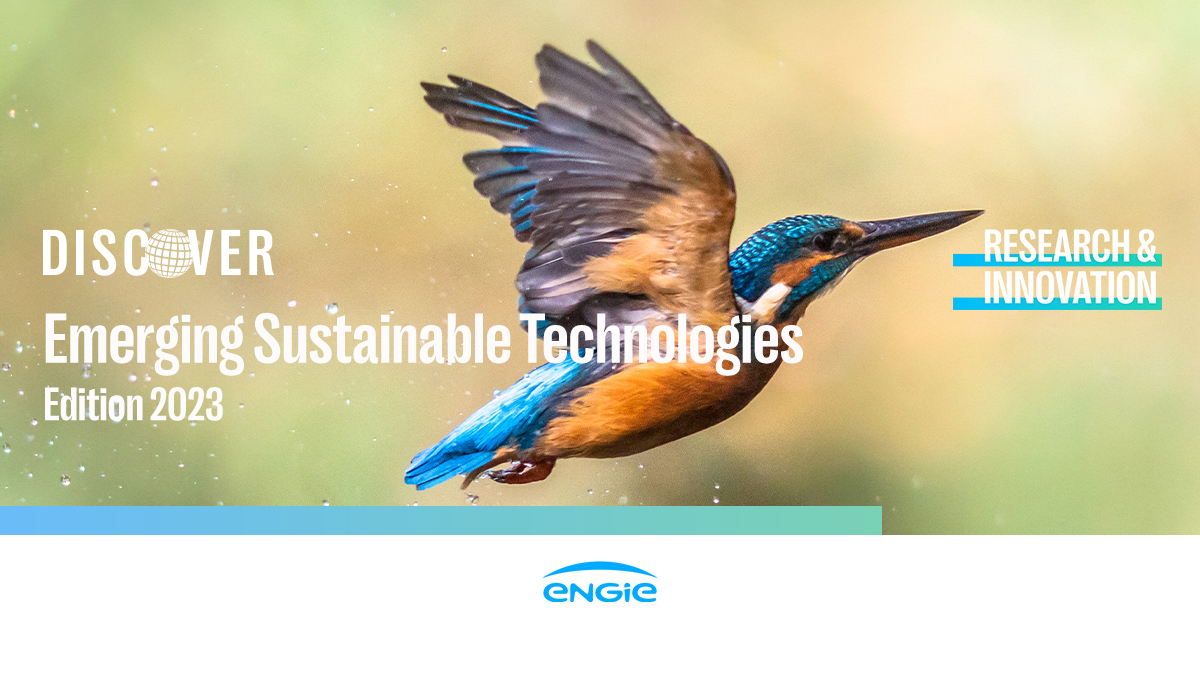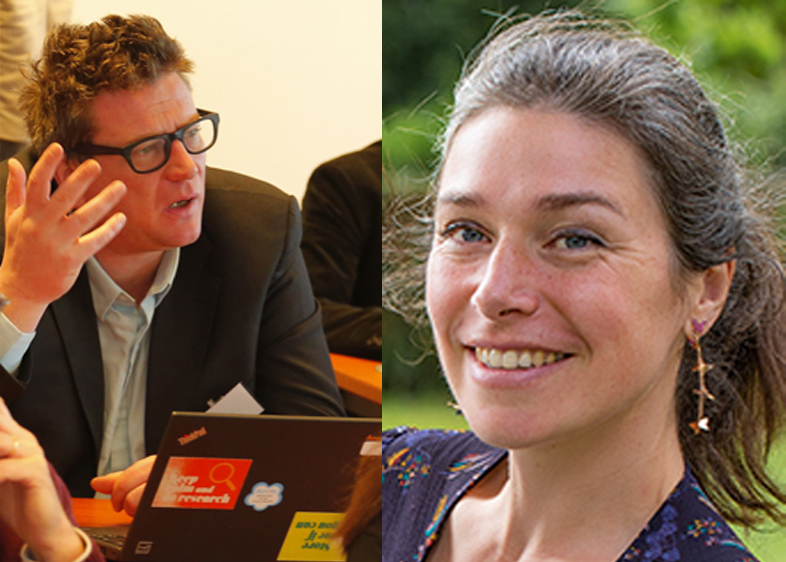ENGIE Research & Innovation releases its annual Emerging Technologies report toThis 2023 edition is a new call for global collaboration between companies and industries to implement solutions that have the potential to change the game and limit global warming.
Jan Mertens and Elodie Le Cadre, who co-directed this new edition with a network of experts within ENGIE Research and Innovation, present the 2023 report and the reasons behind the choice of new trends and technologies presented.
What is the context of this new edition of Emerging Sustainable Technologies?
Jan Mertens : The latest IPPC WGIII report, published in spring 2022, leaves no scientific doubt that the current climate change is man-induced. The sense of urgency increased further over the summer 2022 due to more extreme weather events such as wildfires and floods worldwide, and an exceptionally severe drought in Europe.
The challenge lies not so much in developing technologies from scratch but rather in upscaling what already exists in labs at universities, research centers, start-ups and companies. The ‘industrialisation’ of those technologies poses a great challenge: just showing that a technology works in the lab or small pilot is not sufficiently convincing for a company to take up the technology and deploy it massively.
Elodie le Cadre : Based on the work carried out by the scientific community on climate, the energy industry as well as its entire supply chain now have the responsibility to implement sustainable technological solutions to contain our greenhouse gas emissions in the short term.. This is a mission with very important challenges and we have identified in literature an increase in scientific works and publications in 2022. This is why we have chosen to synthesise and simplify them in the first new chapter of our 2023 edition entitled 'Emerging Trends'.
We have focused on photovoltaic panels, which have reached a record level of installation in 2022, reaching 1 TerraWatt peakh worldwide, and the massive development of batteries. Both require materials, some of which are already ‘critical’ today and we list the solutions identified to date to mitigate this criticality.
In parallel, as Jan Mertens reminds us, for the first time the IPCC has mentioned the use of carbon dioxide removal technologies to reach our carbon neutrality goals. These solutions are part of the geo-engineering family, which is becoming no longer a taboo subject. Nevertheless, it raises many controversies which we have identified in the light of scientific evidence, most important one being that it should never be used as an excuse to continue using fossil fuels!
Can the new technologies you are presenting this year respond to the climate emergency?
JM : We will need a wide variety of technologies and the ones presented here are just a small extract of possible game changers but it is the ‘industrialisation’ of those technologies that poses a great challenge. del In many cases, there is a significant ‘business gap’ making the technology unattractive to companies due to the associated high financial risk. But it is not unthinkable that society, due to this heightened sense of urgency, will at some point no longer tolerate the ‘excuse’ of this business gap and force the large-scale deployment of the necessary technologies, despite the financial risks.
ELC : Each year, we try to complete the list of emerging technologies that we consider as part of the answer to the climate emergency without forgetting those identified in previous editions. The five technologies identified this year are hydrogen production from pyrolysis and hydrogen produced directly from the sun. We also focus on advances in space-based solar power and nature-based solutions to remove carbon dioxide from the atmosphere.
Which economic sectors do you think are most concerned by the climate emergency today?
JM : All sectors are concerned but some are easier to make carbon neutral than others. In fact, sectors such as aviation, shipping, the steel and cement industries, long distance transport of (renewable) energy and long term storage of (renewable) energy are amongst the difficult ones since they can not be easily electrifies. These sectors account for roughly one third of our energy needs and will require sustainable molecules. Significant thermodynamic constraints need to be addressed in the search for solutions. But even if we cut emissions now, extreme events – such as floods, droughts, tornadoes and Arctic ice loss – are not going to disappear in the coming years, or even decades. So we will need to adapt whilst continuing to develop at the same time further the many climate actions that we have already identified to reach our objective of a net zero carbon society.
ELC : Greenhouse gas emissions are a diffuse pollution of which the effects will impact everyone to a greater or lesser extent. Low-carbon technologies such as turquoise hydrogen, solar fuels and space solar power, which we address in this edition, will most likely play a key role, but so will CO2 removal technologies (Carbon Dioxide Removal or CDR). Finally, to illustrate the interconnection and industrial symbiosis essential to achieving carbon neutrality, we explain the CIRculAIR fuel concept, which links electricity to molecules and turns air into useful molecules using renewable electricity.
What leads you to address the issue of "climate engineering" in this edition?
JM : We may need to consider efforts on climate engineering, and have an open and scientific discussion about the risks and benefits of this approach which are not yet fully understood. Our decision to include the (sometimes) taboo topic of geo-engineering in this document is meant as a contribution to that discussion. Afforestation and reforestation, for example, show great potential but, although less controversial than some other ideas, they still need to be carefully evaluated with respect to their impact on the local environment. This also goes for several other climate engineering technologies that seem promising but need to be carefully examined as to their long-term impacts. To be clear, climate engineering should never be seen as a “silver bullet”, a single quick solution to the planet’s problems.
But as we push forward with our fight against climate change, we should consider it as a potential solution in our portfolio – and one that may become necessary to reach our climate targets. This is why we need this discussion but climate engineering should never be used as an excuse to continue using fossil fuels!
ELC : The acceleration of the energy
transition will take place under strong political, social and economic
constraints as all countries have to act at the same time with limited
resources on Earth. Whether it is for the elimination of greenhouse gases
already in the atmosphere or for carbon neutral technologies. Today the focus
is on the materials needed for the massive construction in a record time of all
new carbon neutral energy technologies or the means of storing renewable energy.
We are
vigilant about this and try to bring in this new edition, our scientific
analysis and our point of view of the future energy industry thanks to the
expertise of all the research teams of ENGIE Research and Innovation. All our
reports are the result of a collaborative work resulting from numerous
exchanges with our worldwide experts in these technologies in order to bring a
positive and constructive enlightening on the energy transition. We wish you a
pleasant reading!



